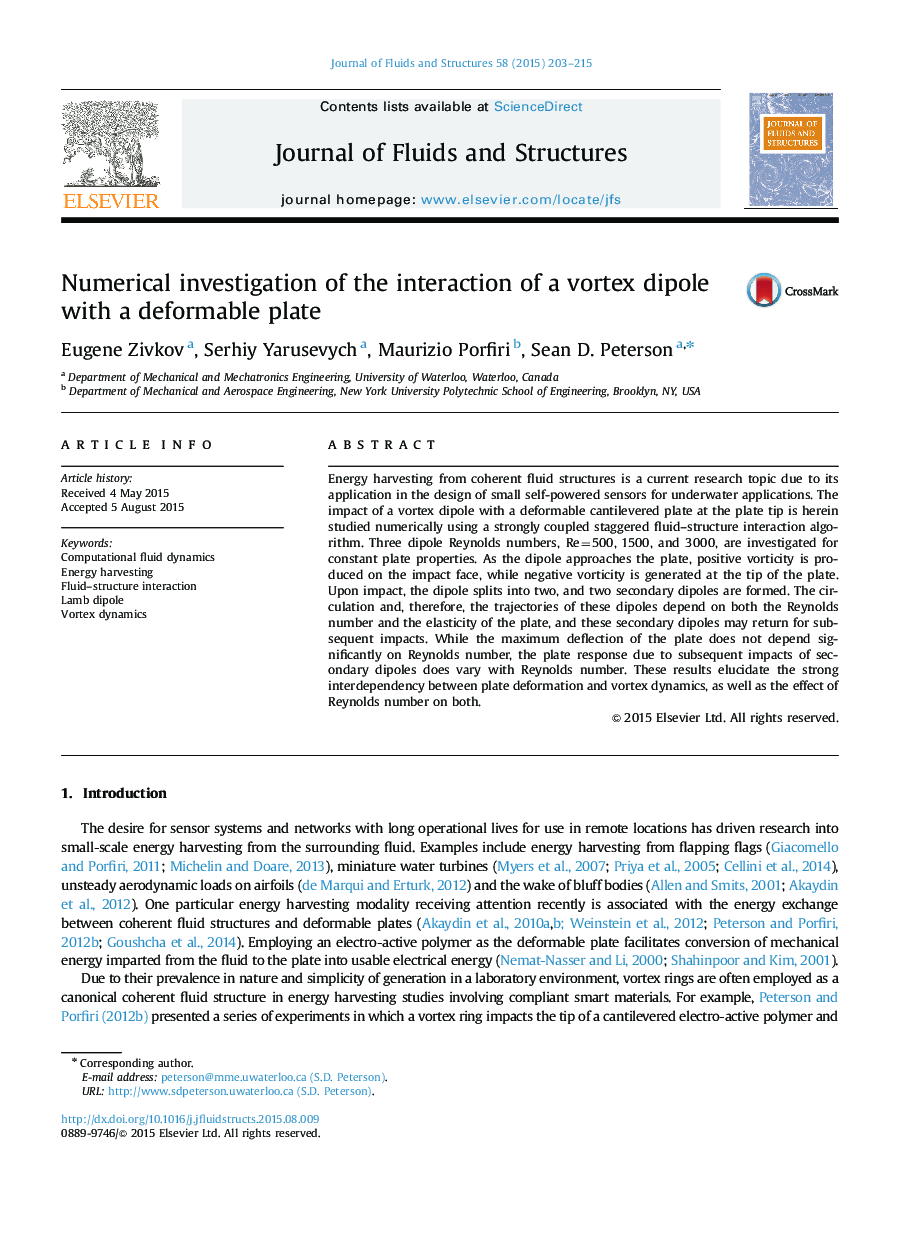| Article ID | Journal | Published Year | Pages | File Type |
|---|---|---|---|---|
| 7175934 | Journal of Fluids and Structures | 2015 | 13 Pages |
Abstract
Energy harvesting from coherent fluid structures is a current research topic due to its application in the design of small self-powered sensors for underwater applications. The impact of a vortex dipole with a deformable cantilevered plate at the plate tip is herein studied numerically using a strongly coupled staggered fluid-structure interaction algorithm. Three dipole Reynolds numbers, Re=500, 1500, and 3000, are investigated for constant plate properties. As the dipole approaches the plate, positive vorticity is produced on the impact face, while negative vorticity is generated at the tip of the plate. Upon impact, the dipole splits into two, and two secondary dipoles are formed. The circulation and, therefore, the trajectories of these dipoles depend on both the Reynolds number and the elasticity of the plate, and these secondary dipoles may return for subsequent impacts. While the maximum deflection of the plate does not depend significantly on Reynolds number, the plate response due to subsequent impacts of secondary dipoles does vary with Reynolds number. These results elucidate the strong interdependency between plate deformation and vortex dynamics, as well as the effect of Reynolds number on both.
Related Topics
Physical Sciences and Engineering
Engineering
Mechanical Engineering
Authors
Eugene Zivkov, Serhiy Yarusevych, Maurizio Porfiri, Sean D. Peterson,
